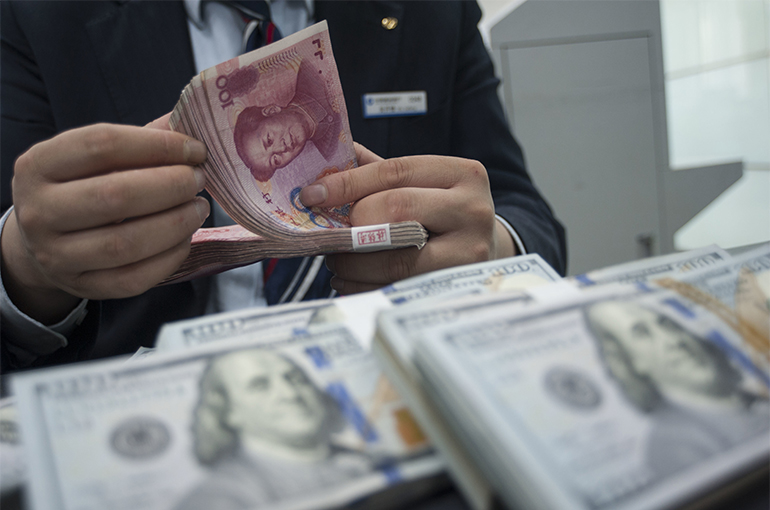 Chinese Yuan Surges 500 Bps This Week Despite US Tariff Hike, While Dollar Tumbles
Chinese Yuan Surges 500 Bps This Week Despite US Tariff Hike, While Dollar Tumbles(Yicai) March 6 -- The Chinese yuan advanced 500 basis points this week, performing remarkably well despite projections that it would weaken significantly after the US tariff hike was imposed on March 4. While the US dollar, which was expected to strengthen, was dragged down by concerns over the country's poor economic outlook.
The offshore yuan was trading at 7.2586 to the US dollar as of 4.50 p.m. yesterday.
The Chinese government will prioritize stabilizing the yuan’s exchange rate in the near term, foreign exchange traders at both Chinese and international banks told Yicai.
The offshore yuan exchange rate with the greenback is likely to stay within the 7.2 to 7.35 range, said Eric Robertsen, head of global research and chief strategist at UK lender Standard Chartered.
The Chinese central bank’s clear signals that it will maintain stability have supported the yuan this year, traders said. The central parity rate is playing a counter-cyclical adjustment role amid escalating tariff tensions. And the large issuance of offshore yuan central bank bills at the start of the year has also reinforced market confidence.
The People’s Bank of China has made it clear that it will stabilize the exchange rate, said Liu Yang, general manager of the financial markets division at minerals exporter Zhejiang Development Group. In the short term, an extra 10 percent tariff is unlikely to push the yuan past the 7.35 mark, especially with the dollar under pressure.
The US Dollar Index, which is a measure of its value relative to a basket of other currencies, tumbled below 105 yesterday, dipping below its 120-day moving average. Despite the near-term depreciation, some institutions still advise caution, saying that the dollar could find support, especially if risk aversion spreads outside of dollar-denominated markets.
A strengthening euro was the main reason for the softening dollar. The euro climbed to 1.07 against the dollar yesterday, and to 7.7 against the yuan.
The new German government’s fiscal expansion supports the euro’s medium- to long-term appreciation, Liu said. Additionally, expectations of a ceasefire in the Russia-Ukraine war have further buoyed the currency
The markets are focussing on US’ non-farm payroll data this week, forecasting that jobs will increase by 133,000, down from 143,000 in January and that the unemployment rate will hold steady at around 4 percent. However, the ongoing cull of US government workers has added uncertainty. Weak overall data this week could weigh on both the dollar and US stocks.
Editor: Kim Taylor